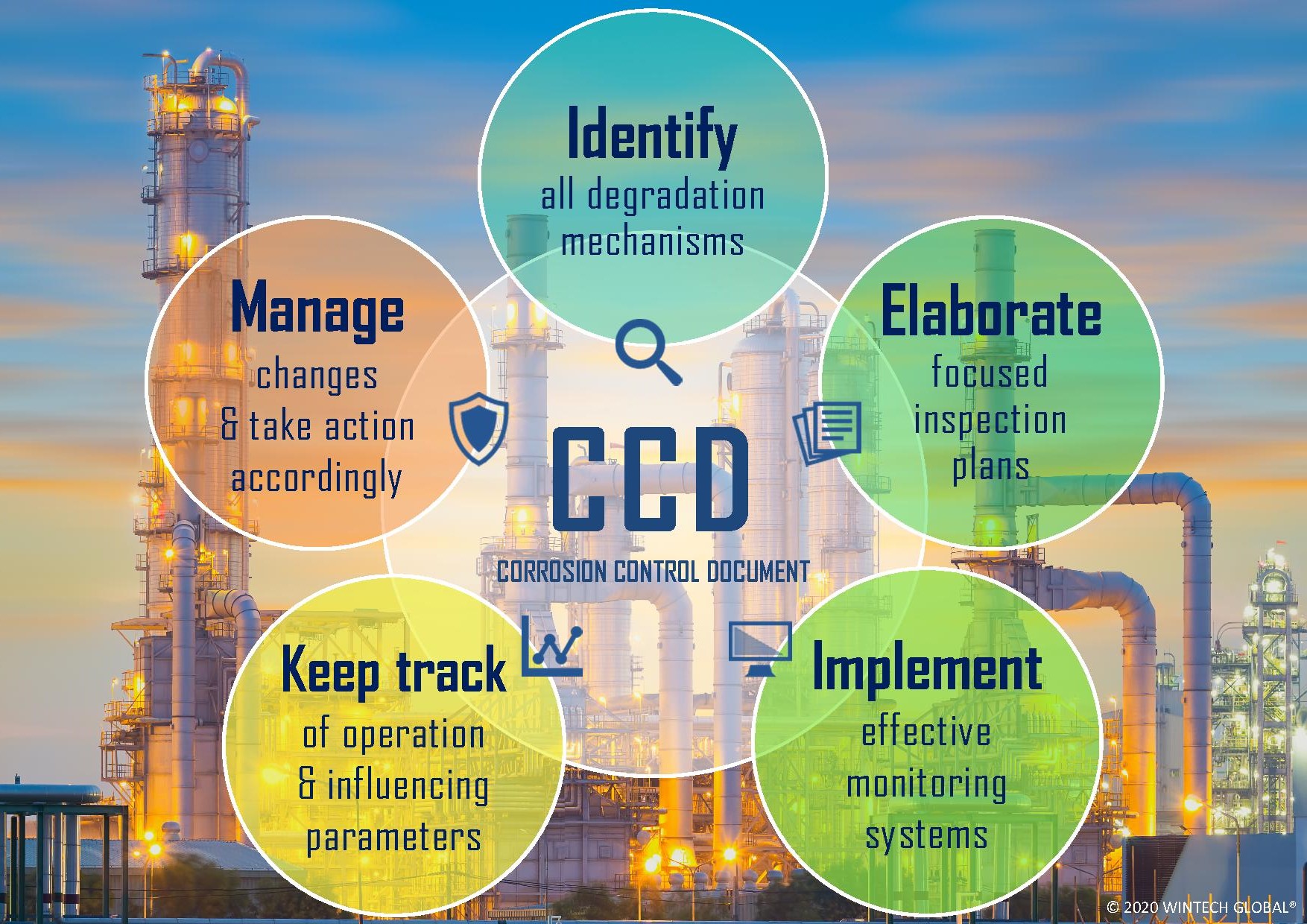Posted on 4 November 2020
Corrosion Control Document (CCD)
at the heart of the Plant reliability management
The main features of corrosion, or in more general terms degradation, are the immense variety of conditions in which it can occur, with the great number of forms it can take, and the fact that it is virtually inescapable, as a result of thermodynamic principles.
It is therefore all about knowing how to permanently qualify the active degradation phenomena and their respective effects in order not to have to face the consequences of an unforeseen phenomenon whose damage can unfortunately go very fast.
The kinetics of degradation is a function of a large number of factors that result from the environment and from metallurgy. When speaking of corrosion, it is necessary to define corrosion. It is an (electro)-chemical reaction between a material, metallic or non-metallic, and its environment, which causes deterioration of the material and/or its properties, where a corrosive system is composed of one or more materials and the entire environment that influences corrosion.
To avoid the exposure of materials to excessively severe conditions, one should know the intrinsic limits or Integrity Operating Windows (IOW) of each zone and closely monitor the process variables concerned.
Constant attention must be paid to any changes that may affect the situation and IOW. In this respect, compliance with the Management Of Change (MOC) procedure is absolutely essential, especially in a context of increasingly complex and disrupted operations.
The understanding of the potential degradation mechanisms, as well as a thorough knowledge of the operating limits of the building materials, remain the key factors for the implementation of an efficient Asset Integrity Management (AIM) program. This analysis is the basis for the Corrosion Control Documents (or Corrosion Manual) to be custom-made for all production units. These documents, considered to be “Integrity Handbooks”, allow a better understanding of degradation mechanisms (corrosion, erosion, fatigue, etc.) associated with the knowledge of the production units and their operation conditions. The CCD is a compulsory basis for a pro-active monitoring and valuable inspection.
As a true central reference tool, this document is updated over time to reflect changes in operations.
The elaboration of the CCDs is a multidisciplinary work performed by a working group including representatives of varied specialties such as Inspection, Materials & corrosion, Production, Technology and Maintenance. As a first essential step to successful AIM, the Manual is settled to serve as a suitable guideline and support while aiming at:
- – Increasing know-how on active and potential corrosion/degradation mechanisms,
- – Studying the potential degradation phenomena, active in the operation unit, zone by zone in what we call corrosion circuits or corrosion loops. In this way, the predictability of failure will be greatly increased taking into account changes in operation modes or feed changes to the units,
- – Creating a surveillance/inspection plan for the unit, including all the areas to be inspected and their inspection methods,
- – Providing information to focus inspection efforts (basic input for relevant Risk-based Inspection).
The Corrosion Manual, for each processing unit, reflects the understanding of the corrosion problems according to the as-built materials and the operating conditions. It contains Corrosion Loops which have been determined as regards to the active or potential corrosion/degradation mechanisms.
The following information is given in these manuals:
- – “as-built” materials
- – applicable process conditions
- – feed, charge and potential contaminants
- – expected form(s) of degradation
- – expected max corrosion rates
- – criticality analysis
The inspection methods and the inspection frequency for each piping system and each piece of equipment shall be based on the here above information.
Whatever the plant, the Corrosion Control Document is an essential tool providing all the information necessary to support facilities sustainable reliability.

